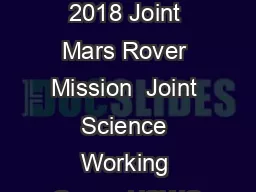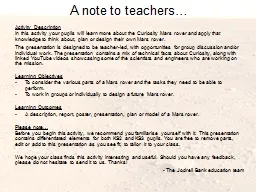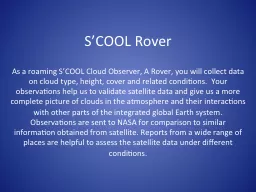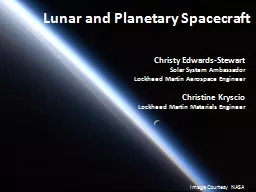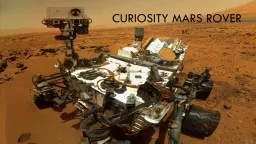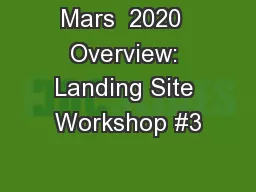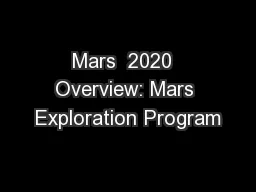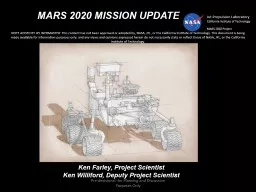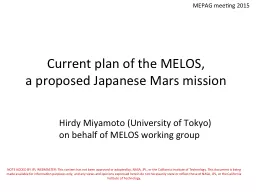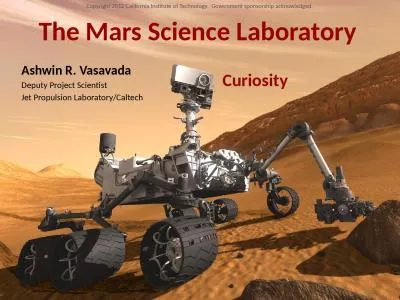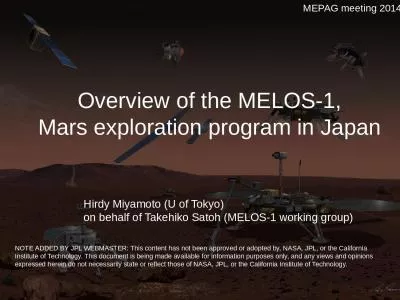PPT-Report of the 2018 Joint Mars Rover Mission Joint Science Working Group (JSWG
Author : myesha-ticknor | Published Date : 2019-10-31
Report of the 2018 Joint Mars Rover Mission Joint Science Working Group JSWG Feb 28 2012 Dave Beaty Gerhard Kminek Allwood AC Arvidson R Borg LE Farmer J D Goesmann
Presentation Embed Code
Download Presentation
Download Presentation The PPT/PDF document "Report of the 2018 Joint Mars Rover Miss..." is the property of its rightful owner. Permission is granted to download and print the materials on this website for personal, non-commercial use only, and to display it on your personal computer provided you do not modify the materials and that you retain all copyright notices contained in the materials. By downloading content from our website, you accept the terms of this agreement.
Report of the 2018 Joint Mars Rover Mission Joint Science Working Group (JSWG: Transcript
Download Rules Of Document
"Report of the 2018 Joint Mars Rover Mission Joint Science Working Group (JSWG"The content belongs to its owner. You may download and print it for personal use, without modification, and keep all copyright notices. By downloading, you agree to these terms.
Related Documents

